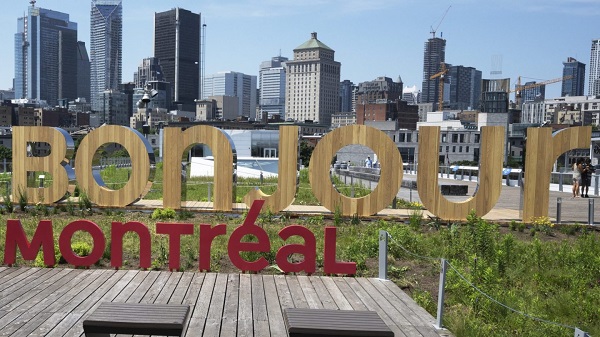Frontier Centre for Public Policy
No, Mr. Mayor outside organizers are not responsible for student radicalism

From the Frontier Centre for Public Policy
While there are malevolent outside actors doing what they can with universities, the influential corruption is internal.
In his May 1 press conference on the university student demonstrations, occupations, and riots, New York Mayor Eric Adams blamed outside professional organizers for radicalizing our young people in universities in New York, on campuses throughout the country, and around the world. Exactly who these sinister outside forces are, the mayor did not specify.
Of course, the mayor is correct that there are outside professional organizers and agitators who have infiltrated campuses and encouraged even more extreme measures by demonstrators. Everyone sees the uniformity across the country of materials provided, such as tents and signs.
Yes, these are malevolent forces bent on transforming or destroying the United States. But funders and organizers are facilitators and enablers, not primary motivators. Mr. Adams is right in saying that professionals are behind these upheavals. But outside agitators and funders are not shaping the hearts and minds of university students. Rather, the professionals responsible for students’ mindsets are not external to universities; they are the employees of universities, who have been working on the students, miseducating them, throughout their entire university careers.
The satirical website Babylon Bee gets it right. With reference to the occupation of the Columbia University administration building, the Bee article headline is “Oh No! Indoctrinated Woke Extremists Destroy Woke Extremist Indoctrination Center.”
Quoting an imaginary university official, the Bee stated: “‘We didn’t see this coming,’ said one official. ‘After spending decades brainwashing young, impressionable people into volatile, savage revolutionaries, we were shocked to see them unleash such volatility and savagery while trying to launch a revolution. We wish there had been warning signs along the way.’”
Would that this were only humorous parody. Alas, it is an accurate representation of our universities in the 21st century. The many professors who have joined the demonstrators-occupiers-rioters, and who knows how many administrators and staff, is proof of the nature of today’s education.
The Bee continued:
“Students who engaged in the violent attack were thankful for the years of intense training they received from the institution they were now actively working to destroy. …
“At publishing time, the school’s leadership was confident that the government would do nothing to impede their ongoing efforts to make the country worse and more dangerous.”
The many pleas from well-meaning observers for the occupiers to desist so that students can return to their classes are beside the point. Their classes are where they were radicalized. The faculty itself is almost entirely radicalized.
Left-wing university monoculture today is nothing like the Enlightenment-based university that I attended in the mid-20th century, where the emphasis was on searching for the objective truth of reality using reason, evidence, and well-founded conclusions. Universities have now rejected the search for truth in favor of activism based on far-left Marxist “truths,” which may not be questioned.
Among these “truths” is the certainty that all people in the world are divided between evil, ruthless oppressors and exploiters and innocent, noble victims. In this class conflict, which is the only important feature of human life, black, indigenous, and people of color (BIPOC), LGBT people, females, the disabled, and Muslims are all innocent victims of whites, Asians, and Jews, heterosexuals, males, the able, and Christians.
“Victims” are represented in universities by grievance subjects, which at first leaked into but then flooded the humanities and social sciences. Feminist, Black, Queer, Islamic, and Disabled Studies do not exist to investigate truth and reality but to advocate for the victims they represent, and to spur change to the advantage of their designated category.
As part of this project, one common belief among grievance subjects, and now the humanities and social sciences, is that Western civilization must be abandoned as oppressive, and Western countries, such as the United States and Canada, must be transformed entirely or destroyed. Anti-colonial studies “prove” that these countries are in any case invalid and that the American and Canadian citizens are “colonial settlers” without legitimate standing.
University administrators are not innocent victims of these trends. On the contrary, they are primary instigators. They impose the “diversity, equity, and inclusion” manifestations of the “social justice” ideology, leading to official implementation of reverse racism, reverse sexism, and segregation. Discrimination against “oppressors” is not only tolerated; it is also systematically imposed and celebrated.
While student bodies have remained consistent in size, and the professoriat has, if anything, shrunk, not to mention the increased reliance on untenured, temporary “sessional” lecturers (a great financial saving), administrations have exploded in size, increasing to double or triple in most universities. One source of this is “DEI officers,” hired at every level and in every unit, at huge cost, to serve as political commissars policing thought and speech, so that no one can deviate from politically “correct” belief and expression.
Any professor, lecturer, or instructor professing opinions not in line with “social justice” and radical change are quickly identified and surrounded by DEI commissars and forced to confess error, go to re-education programs, lose privileges of various kinds—forget promotion and funding—and, if stubborn in deviation, termination outright, and banishment from the university. This puts great power in the hands of students, who only have to say that they are offended by what a professor says, and she (more rarely he today) is on the chopping block.
So while there are malevolent outside actors doing what they can with universities, the influential corruption is internal. If you block the outsiders, nothing will change. The universities are the source of the radicalism.
Philip Carl Salzman is Emeritus Professor of Anthropology at McGill University and Senior Fellow at the Frontier Centre for Public Policy.
COVID-19
Report Shows Politics Trumped Science on U.S. Vaccine Mandates

From the Frontier Centre for Public Policy
By Lee Harding
If you thought responsible science drove the bus on the pandemic response, think again. A December 2024 report by the U.S. House of Representatives Select Subcommittee, Coronavirus Pandemic shows that political agendas made regulatory bodies rush vaccine approvals, mandates, and boosters, causing public distrust.
“After Action Review of the COVID-19 Pandemic: The Lessons Learned and a Path Forward” praised the Trump administration’s efforts to speed up vaccine development. By contrast, the report said presidential candidate Joe Biden and vice-presidential candidate Kamala Harris undermined public confidence.
“[W]hy do we think the public is gonna line up to be willing to take the injection?” Joe Biden asked on September 5, 2020. This quote appeared in a Politico article titled “Harris says she wouldn’t trust Trump on any vaccine released before [the] election.”
The House report noted, “These irresponsible statements eventually proved to be outright hypocrisy less than a year later when the Biden-Harris Administration began to boldly decry all individuals who decided to forgo COVID-19 vaccinations for personal, religious, or medical reasons.”
Millions of doses of COVID-19 vaccines were administered beginning in December 2020 under an Emergency Use Authorization. This mechanism allows unapproved medical products to be used in emergency situations under certain criteria, including that there are no alternatives. The only previous EUA was for the 2004 anthrax vaccine, which was only administered to a narrow group of people.
By the time vaccines rolled out, SARS-CoV-2 had already infected 91 million Americans. The original SARS virus some 15 years prior showed that people who recovered had lasting immunity. Later, a January 2021 study of 200 participants by the La Jolla Institute of Immunology found 95 per cent of people who had contracted SARS-CoV-2 (the virus behind COVID-19) had lasting immune responses. A February 16, 2023 article by Caroline Stein in The Lancet (updated March 11, 2023) showed that contracting COVID-19 provided an immune response that was as good or better than two COVID-19 shots.
Correspondence suggests that part of the motivation for full (and not just emergency) vaccine approval was to facilitate vaccine mandates. A July 21, 2021, email from Dr. Marion Gruber, then director of vaccine reviews for the Food and Drug Administration (FDA), recalled that Dr. Janet Woodcock had stated that “absent a license, states cannot require mandatory vaccination.” Woodcock was the FDA’s Principal Deputy Commissioner at the time.
Sure enough, the FDA granted full vaccine approval on August 23, 2021, more than four months sooner than a normal priority process would take. Yet, five days prior, Biden made an announcement that put pressure on regulators.
On August 18, 2021, Biden announced that all Americans would have booster shots available starting the week of September 20, pending final evaluation from the FDA and the U.S. Centers for Disease Control and Prevention (CDC).
Some decision-makers objected. Dr. Marion Gruber and fellow FDA deputy director of vaccine research Dr. Philip Krause had concerns regarding the hasty timelines for approving Pfizer’s primary shots and boosters. On August 31, 2021, they announced their retirements.
According to a contemporary New York Times article, Krause and Gruber were upset about Biden’s booster announcement. The article said that “neither believed there was enough data to justify offering booster shots yet,” and that they “viewed the announcement, amplified by President Biden, as pressure on the F.D.A. to quickly authorize them.”
In The Lancet on September 13, 2021, Gruber, Krause, and 16 other scientists warned that mass boosting risked triggering myocarditis (heart inflammation) for little benefit.
“[W]idespread boosting should be undertaken only if there is clear evidence that it is appropriate,” the authors wrote. “Current evidence does not, therefore, appear to show a need for boosting in the general population, in which efficacy against severe disease remains high.”
Regardless, approval for the boosters arrived on schedule on September 24, 2021. CDC Director Dr. Rochelle Walensky granted this approval, but for a wider population than recommended by her advisory panel. This was only the second time in CDC history that a director had defied panel advice.
“[T]his process may have been tainted with political pressure,” the House report found.
Amidst all this, the vaccines were fully licensed. The FDA licensed the Comirnaty (Pfizer-BioNTech) vaccine on August 23, 2021. The very next day, Defense Secretary Lloyd Austin issued a memo announcing a vaccine mandate for the military. Four other federal mandates followed.
“[T]he public’s perception [is] that these vaccines were approved in a hurry to satisfy a political agenda,” the House report found.
The House report condemned the dubious process and basis for these mandates. It said the mandates “ignored natural immunity, … risk of adverse events from the vaccine, as well as the fact that the vaccines don’t prevent the spread of COVID-19.”
The mandates robbed people of their livelihoods, “hollowed out our healthcare and education workforces, reduced our military readiness and recruitment, caused vaccine hesitancy, reduced trust in public health, trampled individual freedoms, deepened political divisions, and interfered in the patient-physician relationship,” the report continued.
The same could be said of Canadian vaccine mandates, as shown by the National Citizen’s Inquiry hearings on COVID-19. Unfortunately, an official federal investigation and a resulting acknowledgement do not seem forthcoming. Politicized mandates led to profits for vaccine manufacturers but left “science” with a sullied reputation.
Lee Harding is a Research Fellow for the Frontier Centre for Public Policy.
Energy
Why Canada Must Double Down on Energy Production

From the Frontier Centre for Public Policy
By Lee Harding
Must we cancel fossil fuels to save the earth? No.
James Warren, adjunct professor of environmental sociology at the University of Regina said so in a recent paper for the Johnson Shoyama School of Public Policy, a joint effort by his university and the University of Saskatchewan. The title says it all: “Maximizing Canadian oil production and exports over the medium-term could help reduce CO2 emissions for the long-term.”
The professor admits on the face of it, his argument sounds like a “drink your way to sobriety solution.” However, he does make the defensible and factual case, pointing to Canadian oil reserves and a Scandinavian example.
Decades ago, Norway imitated the 1970’s Heritage Fund in Alberta that set aside a designated portion of the government’s petroleum revenues for an investment fund. Unlike Alberta, Norway stuck to that approach. Today, those investments are being used to develop clean energy and offer incentives to buy electric vehicles.
Norway’s two largest oil companies, Aker BP and Equinor ASA have committed $19 billion USD to develop fields in the North and Norwegian Seas. They argue that without this production, Norway would never be able to afford a green transition.
The same could be said for Canada. Warren laid out stats since 2010 that showed Canada’s oil exports contribute an average of 4.7% of the national GDP. Yet, this noteworthy amount is not nearly what it could be.
Had Trans Mountain, Northern Gateway, and Energy East pipelines been up and running at full capacity from 2015 to 2022, Warren estimates Canada would have seen $292 billion Canadian in additional export revenues. Onerous regulations, not diminished demand, are responsible for Canada’s squandered opportunities, Warren argues this must change.
So much more could be said. Southeast Asia still relies heavily on coal-fired power for its emerging industrialization, a source with twice the carbon emission intensity as natural gas. If lower global emissions are the goal, Canadian oil and natural gas exports offer less carbon-intensive options.
China’s greenhouse gas emissions (GHGs) are more than four times what they were in 1990, during which the U.S. has seen its emissions drop. By now, China is responsible for 30% of global emissions, and the U.S. just 11%. Nevertheless, China built 95% of the world’s new coal-fired power plants in 2023. It aims for carbon neutrality by 2060, not 2050, like the rest of the world.
As of 2023, Canada contributes 1.4 percent of global GHGs, the tenth most in the world and the 15th highest per capita. Given its development and resource-based economy, this should be viewed as an impressively low amount, all spread out over a geographically diverse area and cold climate.
This stat also reveals a glaring reality: if Canada was destroyed, and every animal and human died, all industry and vehicles stopped, and every furnace and fire ceased to burn, 98.6% of global greenhouse gas emissions would remain. So for whom, or to what end, should Canada kneecap its energy production and the industry it fuels?
The only ones served by a world of minimal production is a global aristocracy whose hegemony would no longer be threatened by the accumulated wealth and influence of a growing middle class. That aristocracy is the real beneficiary of prevailing climate change narratives on what is happening in our weather, why it is happening, and how best to handle it.
Remember, another warming period occurred 1000 years ago. The Medieval Warming Period took place between 750 and 1350 AD and was warmest from 950 to 1045, affecting Europe, North America, and the North Atlantic. By some estimates, average summer temperatures in England and Central Europe were 0.7-1.4 degrees higher than now.
Was that warming due to SUVs or other man-made activity? No. Did that world collapse in a series of floods, fires, earthquakes, and hurricanes? No, not in Europe at least. Crop yields grew, new cities emerged, alpine tree lines rose, and the European population more than doubled.
If the world warms again, Canada could be a big winner. In May of 2018, Nature.com published a study by Chinese and Canadian academics entitled, Northward shift of the agricultural climate zone under 21st-Century global climate change. If the band of land useful for crops shifts north, Canada would get an additional 3.1 million square kilometers of farmland by 2099.
Other computer models suggest warming temperatures would cause damaging weather. Their accuracy is debatable, but even if we concede their claims, it does not follow that energy production should drop. We would need more resilient housing to handle the storms and we cannot afford them without a robust economy powered by robust energy production. Solar, wind, and geothermal only go so far.
Whether temperatures are warming or not, Canada should continue tapping into the resources she is blessed with. Wealth is a helpful shelter in the storms of life and is no different for the storms of the planet. Canada is sitting on abundant energy and should not let dubious arguments hold back their development.
Lee Harding is Research Fellow for the Frontier Centre for Public Policy.
-
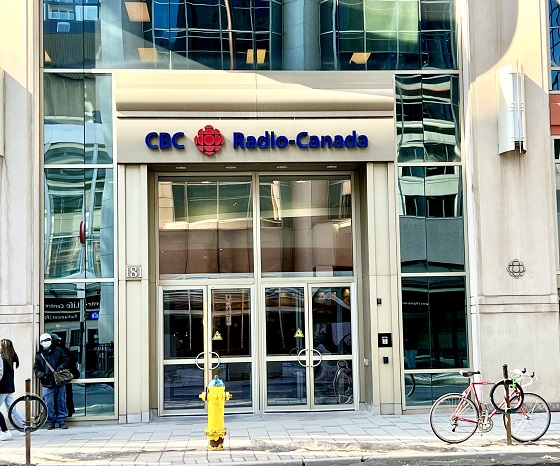
 Business2 days ago
Business2 days agoFederal Heritage Minister recommends nearly doubling CBC funding and reducing accountability
-

 Alberta2 days ago
Alberta2 days agoOpen letter to Ottawa from Alberta strongly urging National Economic Corridor
-

 Addictions2 days ago
Addictions2 days agoBC overhauls safer supply program in response to widespread pharmacy scam
-
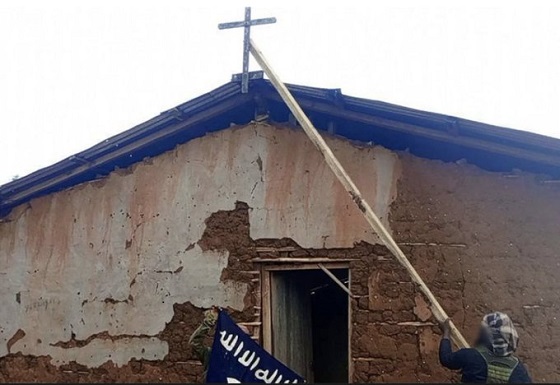
 International2 days ago
International2 days agoJihadis behead 70 Christians in DR Congo church
-
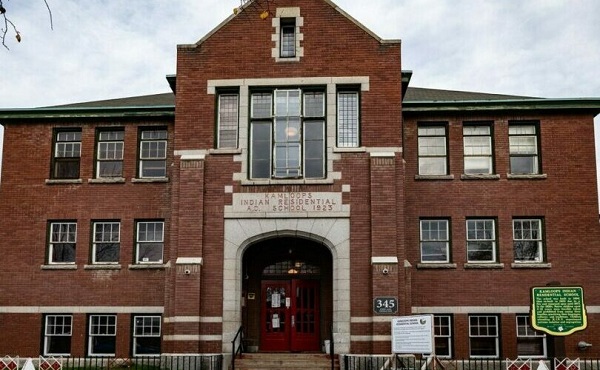
 Indigenous1 day ago
Indigenous1 day agoTrudeau gov’t to halt funds for ‘unmarked graves’ search after millions spent, no bodies found
-

 Business1 day ago
Business1 day agoDOJ drops Biden-era discrimination lawsuit against Elon Musk’s SpaceX
-

 Business2 days ago
Business2 days agoArgentina’s Javier Milei gives Elon Musk chainsaw
-
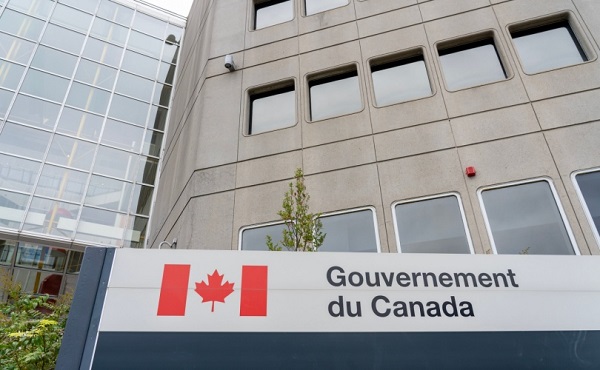
 Business23 hours ago
Business23 hours agoWorst kept secret—red tape strangling Canada’s economy




